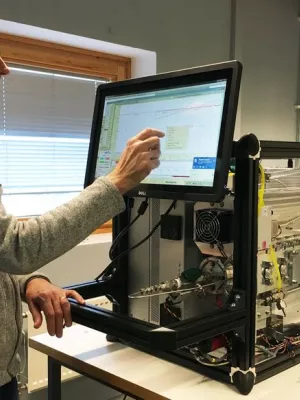
Erik Swietlicki
Professor

Smog Chamber Experiments of SOA Formation from Gasoline Exhaust and Light Aromatics
Author
Summary, in English
Experiments where gasoline exhaust was exposed to UV-radiation to examine Secondary Organic Aerosol (SOA) formation were performed in a smog chamber. The Aerosol Mass Yield (formed SOA/reacted precursor mass) was determined and compared with the yield from a pure precursor experiment in the chamber and from results reported in literature. Preliminary results show that the majority of the organic aerosol mass emitted from idling gasoline cars is secondary. Further, the SOA yields when taking only C6-C10 light aromatics into account are within a similar range to pure precursor experiments, suggesting that light aromatics are dominating precursors in gasoline exhaust SOA.
Department/s
- Ergonomics and Aerosol Technology
- Nuclear physics
- EpiHealth: Epidemiology for Health
Publishing year
2010
Language
English
Full text
- Available as PDF - 454 kB
- Download statistics
Document type
Conference paper
Topic
- Production Engineering, Human Work Science and Ergonomics
- Subatomic Physics
Conference name
14th ETH-Conference on Combustion Generated Nanoparticles
Conference date
2010-08-02
Status
Published
Research group
- Aerosol, Nuclear Physics